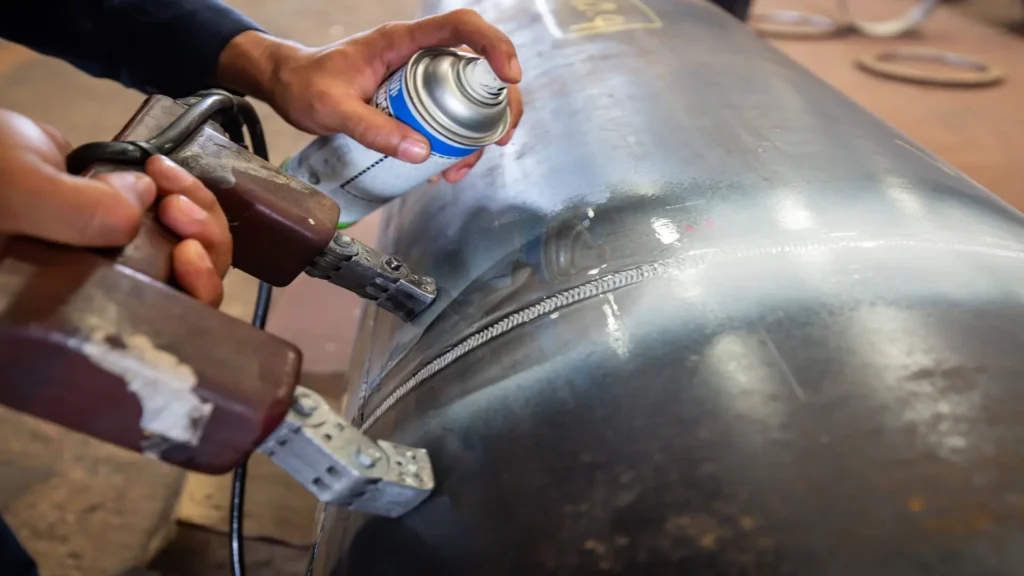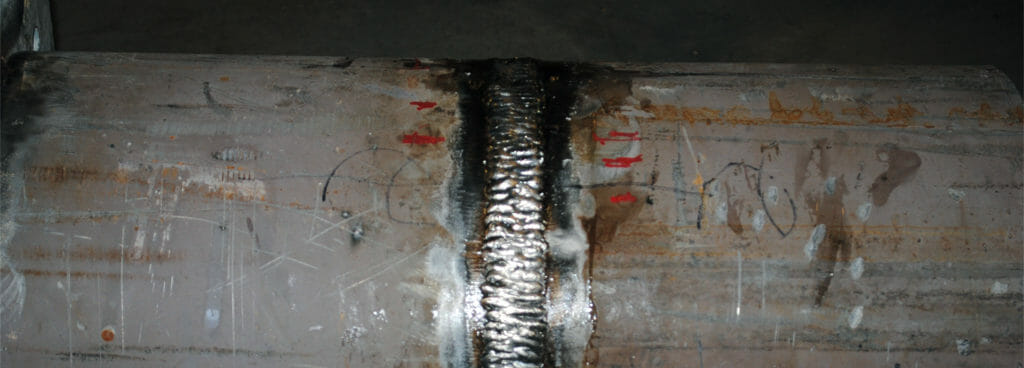Necessary Tips for Successful Welding Inspection Madison Services
Necessary Tips for Successful Welding Inspection Madison Services
Blog Article
Discovering Advanced Devices and Approaches for Accurate Welding Examination
In the world of welding assessment, the pursuit of accuracy and dependability is paramount, stimulating the growth of advanced devices and methods. Technologies such as phased array ultrasonic screening and digital radiography are revolutionizing issue discovery, offering unequaled precision in identifying welding flaws. Additionally, laser scanning developments and automated assessment systems, furnished with expert system, are redefining the landscape by minimizing human mistake and improving precaution. As these sophisticated methods remain to progress, they guarantee not only to transform examination techniques however likewise to elevate appealing questions regarding the future of quality control in commercial applications.
Ultrasonic Examining Developments
Ultrasonic screening advancements regularly stand for the center of developments in welding evaluation technologies. These advancements have actually substantially enhanced the capacity to find and review interruptions within welded frameworks, ensuring improved stability and security - Welding Inspection Madison. Ultrasonic screening employs high-frequency acoustic waves to pass through products, providing detailed information regarding interior attributes without creating damages. The latest growths in this field have concentrated on increasing accuracy, rate, and the capability to interpret complicated information.

Additionally, advancements in software program algorithms for data analysis have boosted the accuracy of issue detection and sizing. Automated ultrasonic testing systems now use high-resolution imaging, allowing thorough analyses of weld top quality. These systems are often integrated with advanced visualization tools, which promote the analysis of outcomes.
Radiographic Assessment Techniques
While ultrasonic screening advancements have established a high criterion in non-destructive examination, radiographic assessment methods continue to play an indispensable role in welding examination by offering unique insights into product honesty. Radiographic testing (RT) uses making use of X-rays or gamma rays to penetrate products, producing a radiograph that aesthetically stands for the interior framework of a weld. This imaging capability is important for detecting subsurface flaws such as porosity, incorporations, and cracks that may not be visible with surface area assessments.
The process involves putting a radiation source on one side of the weld and a detector on the contrary side. Variations in material thickness and thickness impact the attenuation of the rays, producing a different photo that exactly marks imperfections. RT is specifically advantageous for checking thick sections and complex geometries where other approaches may drop short.
Regardless of its performance, radiographic assessment should be conducted with rigorous adherence to safety protocols as a result of the unsafe nature of ionizing radiation. Furthermore, the interpretation of radiographs requires proficient workers, as the high quality of the analysis directly affects the dependability of the assessment. Continuous innovations in digital radiography are enhancing picture clarity and analysis performance, strengthening RT's important function in ensuring weld top quality.
Laser Scanning Advancements
Accepting laser scanning innovation in welding evaluation has actually revolutionized the assessment of weld top quality and stability. This advanced technique uses a non-contact, high-resolution ways of capturing detailed 3D information of weld surfaces. Unlike traditional evaluation techniques, laser scanning gives rapid data acquisition, dramatically improving the performance and accuracy of weld assessments. The technology employs laser beam of lights to produce accurate 3D models, which are crucial for comprehensive analysis of weld dimensions, surface irregularities, and potential defects.
Laser scanning advancements have actually caused substantial enhancements in defining and identifying surface problems such as porosity, lack of combination, and undercuts. The high-resolution data makes it possible for assessors to execute detailed evaluations, guaranteeing that welds satisfy stringent sector criteria. Additionally, this technique supports the growth of digital documents, facilitating long-lasting quality assurance and traceability.
In addition, laser scanning modern technology integrates effortlessly with software solutions designed for automated flaw discovery and analysis. The resultant information can be conveniently shared and reviewed, promoting joint decision-making procedures. As browse around this web-site sectors continue to demand greater criteria for weld high quality, laser scanning remains at the forefront, providing unequaled precision and performance in welding inspection.
Automated Inspection Systems

Automated assessment systems use the advantage of consistency, removing human error and subjectivity from the assessment process. They are designed to run in various settings, from production floors to remote area sites, making sure detailed insurance coverage. Welding Inspection Madison. These systems can be configured to stick to details welding requirements and standards, offering thorough records and documents for quality assurance purposes
Additionally, the combination of cloud-based platforms facilitates the storage and analysis of substantial amounts of inspection information. This allows pattern evaluation and predictive upkeep, allowing producers to deal with possible problems prior to they escalate. The adoption of automated assessment systems is a critical relocation in the direction of improving the reliability and efficiency of welding procedures in commercial applications.

Enhancing Security and Performance
A considerable aspect of improving safety and performance in welding evaluation lies in the integration of cutting-edge innovations that enhance procedures and reduce risks. The fostering of sophisticated non-destructive screening (NDT) approaches, such as ultrasonic screening, phased range ultrasonic testing (PAUT), and radiographic screening, plays a pivotal role in making certain architectural integrity without jeopardizing the safety and security of the personnel entailed. These methods enable detailed evaluations with marginal downtime, reducing prospective dangers related to conventional techniques.
In addition, the implementation of real-time information analytics and equipment knowing algorithms has actually transformed the method examination data is analyzed. By employing anticipating analytics, potential flaws can be recognized before they materialize right into crucial failures, guaranteeing prompt interventions and maintenance. This aggressive approach substantially improves operational efficiency and safety and security in welding processes.
In addition, remote evaluation technologies, including drones and robot crawlers equipped with high-resolution electronic cameras, allow inspectors to examine hard-to-reach areas without revealing them to harmful conditions. This not just improves evaluation accuracy but likewise minimizes human threat. By leveraging these sophisticated More about the author devices and approaches, industries can achieve higher safety requirements and functional efficiency, eventually leading to even more dependable and lasting welding assessment practices.
Verdict
The assimilation of innovative devices and approaches in welding examination dramatically enhances problem discovery and makes sure structural honesty. Welding Inspection Madison. Innovations such as phased array ultrasonic screening, electronic radiography, and laser scanning enhance defect characterization, while automated evaluation systems and AI lower human error. Remote innovations help with secure assessments in hazardous atmospheres, promoting a positive upkeep strategy. These improvements not just raise assessment performance but also add to improved safety and security and high quality assurance in commercial welding applications.

Ultrasonic testing advancements frequently stand for the center of improvements in welding examination technologies.While ultrasonic screening innovations have established a high standard in non-destructive evaluation, radiographic evaluation techniques proceed to play an important duty in welding examination by providing special understandings into material integrity.Welcoming laser scanning technology in welding inspection has actually reinvented the analysis of weld high quality and honesty. As sectors proceed to demand higher standards for weld top quality, laser scanning remains at the center, providing unmatched precision and performance in welding inspection.
Automated evaluation systems provide the advantage of uniformity, getting rid of human mistake and subjectivity from the examination procedure.
Report this page